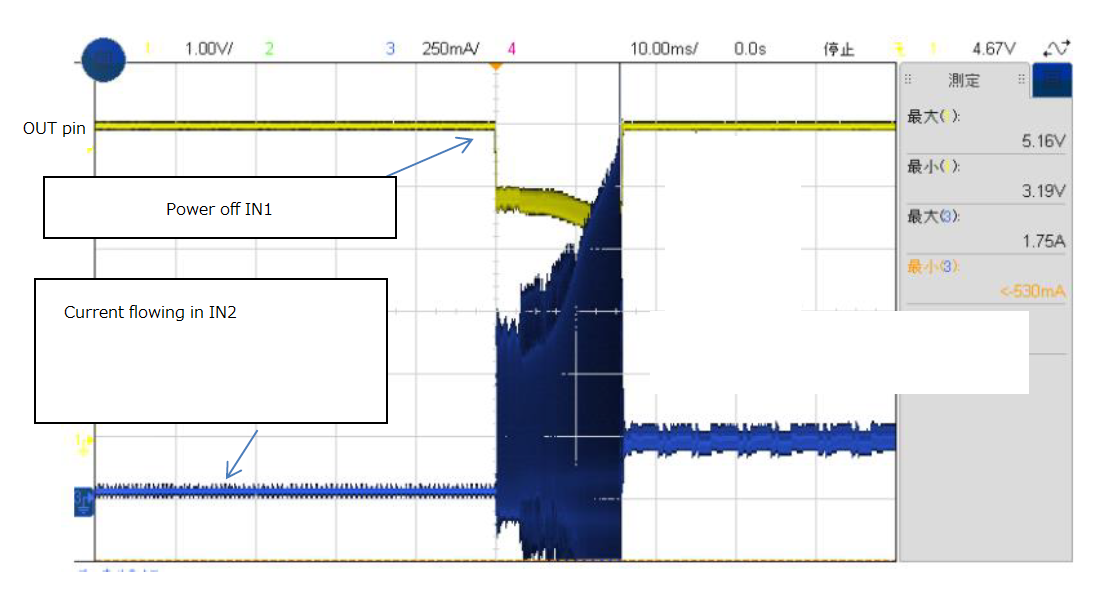Hi,
I created a circuit using the TPS2121 device.
I would like to ask you about the switching behavior of IN1 and IN2.
5V is applied to both IN1 and IN2.
The PR1 pin has a resistor set so that 3.3V is applied when IN1 is 5V.
The CP2 pin has a resistor set so that 2.5V is applied when IN2 is 5V.
XCOMP mode is set by setting the PR1 and CP2 pins.
Also, since the PR1 pin voltage is higher, IN1 has priority in normal operation.
The ILM pin is connected to 51kΩ, so the current limit is 2.2A.
The attached figure below shows the behavior of the OUT pin when the voltage of IN1 is turned off with 5V applied to IN1 and IN2.
Immediately after turning off IN1, the OUT pin drops more than 1V.
The problem is that this state continues for about 7ms.
I checked the current flowing through IN2, but it cannot be said that the current detection is working.
The OUT pin voltage seems to oscillate during the 7ms period, so I suspect that the device is malfunctioning.
Please give me your opinion.
Best regards,


